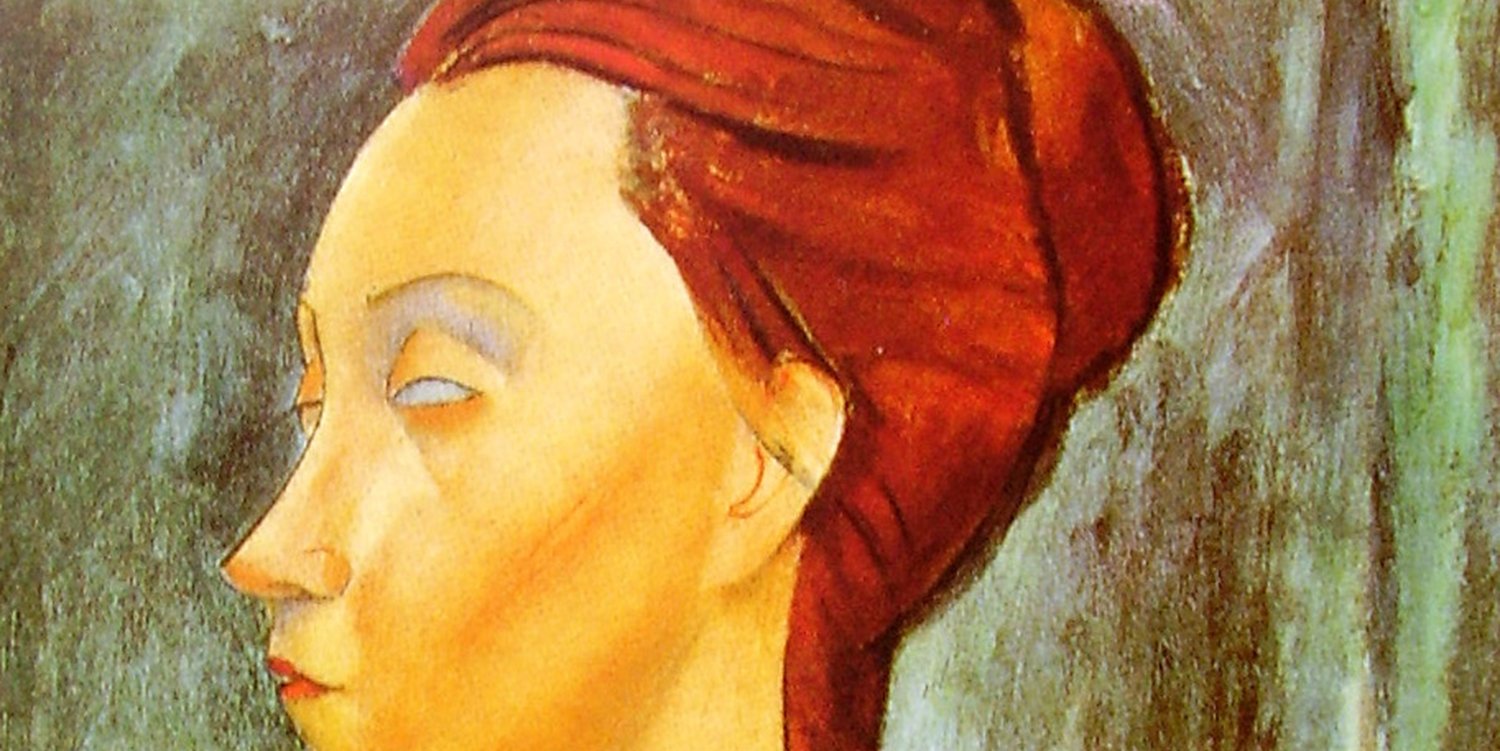“If he shall himself not know…” — Ovid, Metamorphoses, III, 348
The perfect youth reclines by the pond — his reflection undisturbed. In the stillness of the woods, where neither bird nor beast intrudes, he comes to know himself as a stagnant reflection. Narcissus’ doom, as portrayed by Ovid in Metamorphoses, is rooted in this complete and unchanging self-knowledge. He loves that which is loved by others, remaining perpetually on the surface. His tragedy crystallizes in the exclamation, “I am he!” Thus, his identity as both subject and object of love fold into one. This unity, ultimately, cannot be sustained in life.
The portraits in Modigliani’s most recent exhibit at the Tate Modern in London resist such recognition. There exists no axis of reflection — faces asymmetrical, upturned phantoms of unfinished works defying unity. The very canvas in which the viewer is accustomed to finding an image of himself is divided and spurns complete identification.
Modigliani’s subjects gaze coyly, heads askew. The faces seem out of joint, the features misaligned. In “Black Hair (Young Dark-Haired Girl Seated)” (1918), the girl’s head parallels the crooked horizon of the room. One eye a perfect oval while the other angles down; its lid triangular as her parted hair and clasped hands. The apex of each triangle draws attention to a different direction of the painting, keeping the viewer’s eye in perpetual motion.
Even Modigliani’s brushstrokes maintain velocity. The backgrounds consist of broad, intersecting lines that bleed into the figures. Especially in the nudes, the boundary between body and background is porous, defying narratives of complete individuality. These portraits evoke the moment of Narcissus’ undoing, when the rippling water disturbs his perfect reflection. Modigliani’s forms give the impression of constant motion—backgrounds and bodies flowing together.
In Modigliani’s work the boundaries are not between the individual and external world, but lie within. This is evident in the spectrum of depth in “The Italian Woman” (1917). Separated by a solid nose, her eyes gaze in entirely different directions, implying a hierarchy of sight. It is impossible to see this woman’s face completely — each half exists in its own dimension.
The separation of self is echoed in Modigliani’s sculptures, which have their own room in the exhibit. Long, narrow faces contained in glass boxes stand in two rows, facing the viewer. Even these stone heads maintain a sort of dynamism through asymmetry—in each, the tall bridge of the nose cleaves the face. Every eye conserves a unique shape and sets the cheek’s expression.
Modigliani’s reused canvases epitomize this dualism in which strange figures appear as though reflections. In “Bust of Young Girl” (1908), an adult, nude woman emerges from her melancholy blue background. She defies the viewer’s attempts to catch her eyes—staring resolutely at a point in the distance. Below her breasts another face, inverted, appears. The face is not her own — it seems much younger — yet is positioned as a reflection. The angles of sight neatly avoid each other.
Which girl is true, and which reflected? Although one is positioned upright with a complete torso, she floats in hues of blue. The younger figure is faded as a memory, the older firm yet unanchored. Unlike other subjects that are positioned in relation to a horizon of a room, she is curiously isolated. These two faces, sharing one breast, will never catch each other’s eye despite their reflective imagery.
The same element of dualism is perhaps most striking in “Nude Study” (1908), which depicts a girl, head thrown back into a shadow. Her pale torso appears phantomlike on the swirling black and violet background. Her eyes are closed, lips grey, expression difficult to discern between pleasure, exhaustion and transcendence.
Meanwhile, the bottom of the canvas portrays a peaceful face with full hair and bright red lips. Again, this face aligns perfectly to mirror the one above, yet has a separate identity. This bright face is not of the dark, ethereal background. Both pairs of eyes are closed—they do not seek to know each other.
The momentum contained within each of Modigliani’s portraits is a testament to existential self-knowledge. His forms resist completeness but convey depth between fractured identities. This is the state of seeking but not finding oneself. As the tale of Narcissus demonstrates, the point of unified arrival is not for this world. Rather, Modigliani’s canvas offers a glimpse of a reflection — remote yet intimate — to lure the viewer from stagnation.
Incomplete identification is most elegantly captured by “Self Portrait” (1919), in which Modigliani’s face, pallet and background are sophisticated and complete, but his right hand remains unfinished. Thus, the hand with which Modigliani has created the exhibit remains in a perpetual state of becoming.
Contact Sasha Landauer at azland ‘at’ stanford.edu.
